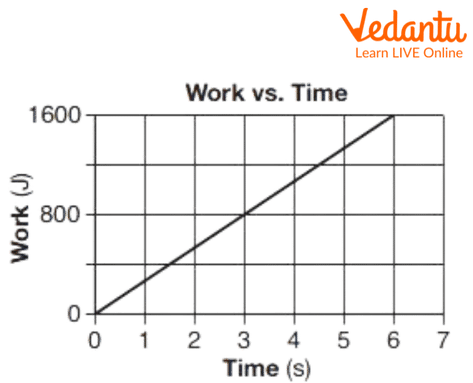




How to Solve Work Time Questions Step by Step
We must first correctly comprehend "Time and Work." Think about having a deadline for your work. So how long will you wait for that? How are you going to compute that? Your effectiveness will determine these kinds of things. Therefore, it is a calculation of how much work may be accomplished in a given amount of time.
Have you thought about how long it will take to finish the project if we hire someone to help us? Efficiency is the word that is most commonly used today. As you are aware, everyone craves speed these days. What if you want to make any team or worker more productive? The formulas for work, time, and efficiency will be used to compute it.
Work
What is work? What do you think about work? Look, every little thing we do to achieve something can be called work. For example, you are learning this, for what you are doing! So that you can get good marks in class, Or make your future bright. It is also a “Work”. People usually refer to work as physical work.
Unit of work is measured in ‘Joule’ or ‘J’.

A Man working
Time
If you are doing some work, time is equally important. As you have to complete your work in a certain time. If you are in school you have to complete your syllabus within 1 year. That is how time is also an important thing to be cared for. Unit of time is measured in ‘Second’ or ‘s’. Now let’s see time and work together.

Shows Time
Work Time Relation
Everyone works for a limited period of time. And thereafter they get results of their work. And the result is usually based on how much work you have done in a certain amount of time. For example – If you are filling a bottle with water in 1 minute and you do that work for 15 minutes. You will have 15 bottles filled. That’s how work happens with respect to time.
Time spent and work done are directly proportional. Additionally, efficiency, one-day work, and work rate eliminate the proportionality sign.
Work is directly proportional to time,
\[{\rm{W\alpha T}}\]

Work and Time Graph
Efficiency
Efficiency is the “total work done” in “Total time” Or can say how much work you can complete in a given time. You will get many questions mentioned as the efficiency of A is twice the efficiency of B or A takes half the time taken by B to do the same work. This all conveys the same meaning. It is inversely proportional to Time,
\[{\rm{E}}\alpha \frac{1}{{\rm{T}}}\].

Work and Time Relation
Formula:
Total work done \[ = \] Time \[ \times \] Efficiency
The above formula can be understood in simple words that the total work done is equal to the times multiplied by efficiency.
We will understand this by solving the upcoming examples:
Man Work Problems
Steps to solve man work problems:
Q. If \[{{\rm{M}}_{\rm{1}}}\] number of people work \[{{\rm{W}}_{\rm{1}}}\], in \[{{\rm{D}}_{\rm{1}}}\] days, working \[{{\rm{T}}_{\rm{1}}}\] hours each day. And a number of \[{{\rm{M}}_{\rm{2}}}\] people working on a work \[{{\rm{W}}_{\rm{2}}}\] completes in \[{{\rm{D}}_{\rm{2}}}\] days, working \[{{\rm{T}}_{\rm{2}}}\] hours each day. Then we can find any of the single missing values by equating these two equations.
W \[ = \] days \[ \times \] hours each day \[ \times \] number of men
W \[ = \] D \[ \times \] T \[ \times \] M
1 \[ = \] \[\frac{{[{\rm{D}} \times {\rm{T}} \times {\rm{M}}]}}{{\rm{W}}}\]
And we will get the same equation for both cases,
So,
\[\frac{{[{{\rm{D}}_1} \times {{\rm{T}}_1} \times {{\rm{M}}_1}]}}{{{{\rm{W}}_{\rm{1}}}}} = \frac{{[{{\rm{D}}_2} \times {{\rm{T}}_{_2}} \times {{\rm{M}}_2}]}}{{{{\rm{W}}_2}}}\]
Because this equation is basically = 1.
The problem basically deals with the man's efficiency, or how much work a man can do in a certain period of time.
Solved Examples
1: Work can be completed by 12 men in 24 days and 12 women in 12 days. In how many days would the 12 men and 12 women working together complete the work?
Solution: As 12 men complete the job in 24 days, the work amount
\[12 \times 24 = 288\]
288 man-days.
For this group of men, the total work amount is 288 man-days. If 6 such men work, the number of days they would take to finish the work would simply be
\[\frac{{288}}{6}\]= 48
48 days.
Coming back to our problem, similarly for women, the amount of work is 144 woman days. It leads to,
144 womandays \[ = \] 288 mandays,
Or, 1 womanday \[ = \] 2 mandays.
Or, 12 woman days \[ = \] 24 man-days.
Thus if 12 men and 12 women work together for a day, it is equivalent to
\[[12 + 24] = 36\]
\[[12 + 24] = 36\] men working on the job for 1 day.
The total work amount being 288 man-days, the number of days taken to complete the job, in this case, will be,
\[\frac{{288}}{{36}} = 8\]
8 days.
2: A can do a piece of work in 24 days and B in 20 days but with the help of C they finish the work in 8 days. C alone can do the work in how many days?
Solution: Using work formula here \[\frac{1}{{\rm{A}}} + \frac{1}{{\rm{B}}} + \frac{{\rm{1}}}{{\rm{C}}} = \frac{1}{8}\]
\[\frac{1}{C} = \frac{1}{8} - \left[ {\frac{1}{A} + \frac{1}{B}} \right]\]\[ \Rightarrow \]\[\frac{1}{C} = \frac{1}{8} - \frac{1}{{24}} - \frac{1}{{20}}\];
\[ \Rightarrow \frac{1}{C} = \frac{1}{{30}}\]
So,
\[{\rm{C}} = 30\]
C can do this work in 30 days.
3: “A” can do a piece of work in 20 days. He did that for 5 days and then “B” finished it in 15 days. In how many days can A and B together finish the work?
24 days
18 days
10 days
15 days
Solution – A’s 5 days work \[ = \frac{5}{{20}} = \frac{1}{4}\].
Remaining work \[ = 1 - \frac{1}{4} = \frac{3}{4}\]
This work was done by “A” in 15 days. A does \[\frac{3}{4}\]th of the work in 15 days, He will finish the work in \[15 \times \frac{4}{3} = 20\]days A & B together would take \[\left[ {\frac{{\rm{1}}}{{\rm{A}}} + \frac{1}{B}} \right]\frac{1}{{20}} + \frac{1}{{20}} = \frac{2}{{20}} = \frac{1}{{10}}\].
So A&B together will take 10 days to complete the work.
4: It takes ‘H’ hours to mow a lawn. In one hour what part of the lawn is mowed?
\[{\rm{H}} - 1\]
\[1 - {\rm{H}}\]
\[\frac{H}{{[1 + H]}}\]
\[\frac{{\rm{1}}}{{\rm{H}}}\]
Solution – Total time to mow a lawn is H hour.
Then in one hour it will mow \[ = \frac{1}{{\rm{H}}}\] .
Conclusion
Work and time formulas are very important and practical in daily life. as we can assess the efficiency of every employee or piece of equipment or the proper amount of time for planning. and has an approximate estimate of how long the current task will take. This article has covered all the essential formulas and examples that can be used to determine someone's time and effort. These are all facts that are currently within our grasp. So let's move on to the problems.
FAQs on Work Time Formula: Explanation, Tricks, and Applications
1. What is the fundamental formula used in work and time problems?
The fundamental relationship in work and time problems is based on the rate of work. The core formula is: Work Done = Rate of Work × Time Taken. From this, you can derive other formulas. For example, to find the time taken, you can use: Time = Work Done / Rate of Work. The 'Rate of Work' is the amount of work an individual can complete in one unit of time (like a day or an hour).
2. How is a person's 'rate of work' or 'efficiency' calculated?
A person's 'rate of work' or 'efficiency' represents the fraction of the job they can complete in a single unit of time. If a person can finish a whole job in 'n' days, their rate of work for one day is calculated as 1/n. For example, if Ram can paint a house in 10 days, his one-day work rate is 1/10 of the house.
3. What is the relationship between the number of workers and the time taken to complete a job?
The number of workers and the time taken to complete a job are in inverse proportion, assuming each worker has the same efficiency. This means if you increase the number of workers, the time taken to complete the job will decrease, and vice versa. For instance, if 5 people can build a wall in 10 days, 10 people can build the same wall in 5 days.
4. What is a simple step-by-step method to solve work and time problems?
A reliable method to solve most work and time problems involves these steps:
- Step 1: Calculate the individual rate of work for each person or machine as a fraction (e.g., 1/n per day).
- Step 2: If they work together, add their individual rates to find the combined rate of work.
- Step 3: Use the combined rate in the formula: Time = Total Work / Combined Rate. The 'Total Work' is usually considered as 1 unit unless specified otherwise.
- Step 4: The result will be the total time taken to complete the job together.
5. Can you provide a simple example of the work-time formula in action?
Certainly. Suppose Person A can complete a task in 20 hours and Person B can complete the same task in 30 hours. To find the time they take working together:
- A's 1-hour work = 1/20
- B's 1-hour work = 1/30
- Combined 1-hour work = 1/20 + 1/30 = (3+2)/60 = 5/60 = 1/12
- This means together they complete 1/12 of the task in one hour. Therefore, the total time to complete the task is the reciprocal, which is 12 hours.
6. How are wages calculated and distributed in work and time problems?
Wages are distributed in direct proportion to the amount of work done by each individual, not the time they worked. The ratio of the work done by each person is used to determine the ratio of their wages. For example, if A and B complete a job and their work ratio is 3:2, then the total wages will also be divided in the ratio of 3:2.
7. How do you handle problems where one element is doing 'negative work'?
'Negative work' is a concept used when an element works against the completion of the task, such as a leak emptying a tank while an inlet pipe is filling it. To solve this, you treat the rate of the element doing negative work as a negative value. If an inlet pipe fills a tank in 4 hours (rate = +1/4) and an outlet pipe empties it in 6 hours (rate = -1/6), their combined rate is (1/4) - (1/6).
8. Why can't we just add the time taken by two people to find the time they take working together?
This is a common misconception. Time is inversely proportional to work rate. You cannot add the time values directly because it defies logic—working together should always take less time than the fastest individual, not more. Instead, you must add their rates of work (the amount of work done per unit of time). By adding their efficiencies, you find their combined power, and from that, you can calculate the reduced time required.
9. How do you compare the work efficiency of two people in a problem?
When a problem states that one person is, for example, "twice as efficient" or "50% more efficient" than another, you can set up their work rates algebraically.
- Let the rate of the less efficient person (B) be x.
- If person A is "twice as efficient," their rate would be 2x.
- If A is "50% more efficient," their rate would be x + 0.5x = 1.5x.
10. Why is the concept of 'Man-Days' important in real-world project planning?
The concept of 'Man-Days' or 'Man-Hours' is a practical application of the work equivalence formula (M1 × D1 = M2 × D2). It helps project managers estimate the total effort required for a task, independent of the team size or timeline. For example, if a project is estimated to take 100 Man-Days, it could be completed by 10 people in 10 days, or 20 people in 5 days. This allows for flexible resource allocation and budget planning in fields like construction and software development.

















